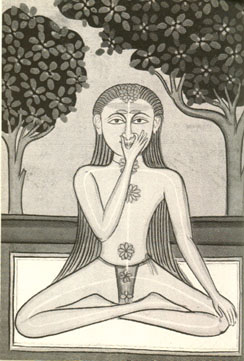
Inside Yoga 138 (13/7/2015)
Last week I taught Viloma Pranayama: so to help your home practice here is a step-by-step guide to the breathing technique.
Viloma means against the hair (loma), or in other words against the order of things or natural flow. The letters “vi” denotes negation, which in terms of breath instead of breathing in one inhalation the breath is broken down into stages – three stages in the case of our classes last week.
This is how it’s practiced: breath in three even stages with a short pause between each stage of inhalation, without letting any air out. There is a short hold of breath when lungs are full and then an extended exhalation to finish a round, and then repeat.
In the class I taught using a short inhalation, a count of 2 for each of the 3 stages, followed by a short hold, also a count of 2, and then when lungs are full a hold of 2 before exhalation of 6 – note that the exhalation is the sum of the three-part inhalation.
For those with larger lungs, the stages can be a count 3 or 4, with the final hold of breath 3 or 4, and exhalation 9 or 12 respectively.
Please note, it is quality of breath which we want, so longer is not always better. Each stage of breathing must be in control, smooth and steady. Similarly to practice of yoga asanas (postures) we want to maintain a sense of steadiness and ease (sthira and sukha) in everything we do.
When we hold the breath with our lungs full, before the extended exhalation starts it is helpful to suck a small amount of air into the lungs before the exhalation. This acts like a release valve, making the transition from retention to exhalation smoother.
If he mind wanders and, for example, you do 4 sets of inhalation, or any other mistake do not give yourself a hard time, just carry on, the continual practice helps iron out mistakes. This is a concentration exercise so while we train our mind to be quiet and let us concentrate on the exercise it ill perhaps no always go to plan!
Continual flow and absorption in the exercise is what we seek and this takes time. If we lose track of our count, just carry on to the next stage. Also, if we feel increasingly stressed while practicing, it is perhaps best to take a pause from the exercise, and breath normally for a while, and resume when we feel calm again. This can happen when new to the exercise or perhaps we are not well.
How long should I practice for? Starting with a few minutes, for example, five minutes at first, building up the time length as confidence and capacity to sustain the practice is advised. Remember, do not run before yoiu can walk.
This pranayama is suitable for most people, and when practiced wisely is very beneficial, boosting concentration levels, reducing stress, as well increasing our lung capacity, It is advisable to avoid this exercise, and in particular holding the breath for a long periods, if suffering from a heart complaint, and also not suitable when pregnant. If in doubt get expert advice.
Any questions or comments please use panel below

9 years ago ·
Hi Gary, you taught this during one of the sessions at work. I use it frequently when I wake in the middle of the night and feel restless and cannot get back to sleep. Concentrating on breathing really helps me settle and before I know it the alarm is going off!
Thank you.
Many thanks.